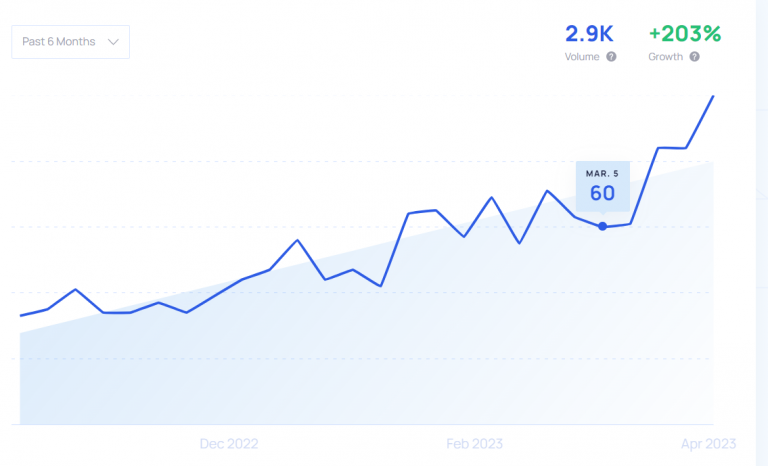Conversion Rate Optimization
If know the real intention of the customer, you are a businessman. What’s the deal with CRO? Conversion Rate Optimization is a wave of change in business and marketing, not just a tactic. CRO increases the proportion of website visits who become buyers by optimizing the user experience and website.
Is CRO really impacted by user experience?
Of course, yes.In the current digital era, when consumers frequently find brands and items online, a brand’s website or App. user experience (UX) can be a business’s undiscovered asset.
Optimizing the user experience (UX) makes it easier for customers to engage in actions like adding things to their shopping carts or completing payments to complete a transaction by effectively showcasing and marketing products on the website. These conversions propel brand expansion and boost revenue.
We’ve compiled a list of some of the most well-known CRO tools available,
including;
You may improve your website for increased conversions by using tools like;
- heatmapping,
- A/B testing, and
- multivariate testing,
such as;
- Optimizely,
- VWO (Visual Website Optimizer), and
- Crazy Egg.
- Amplitude,
- Adobe Analytics,
- Google Analytics,
- and more…
These technologies analyze user behavior, improve tactics, and eventually increase conversion rates.
Plus, when you combine the power of original content with your CRO, it performs at its best. The content quality is what attracts leads who convert and has a significant impact on conversion.
So, why do you hesitate? Together, you can produce excellent content that captivates as well as attracts.
Well, let’s check how these tools are working…
How does Heatmapping work as a CRO tool?
Heatmaps are an effective tool for CRO-Conversion Rate Optimization because they visually depict user activity on a webpage.
In that situation, they function as follows,
1.0 Putting User Interaction Into Visual Form.
A color-coded picture is produced by converting mouse clicks, scrolling, and user motions into a heatmap. Red zones are often locations where users are most engaged, whereas blue zones are areas where users are less engaged.
2.0 Increasing Conversion Rates
Heatmaps are useful for detecting possible obstacles to conversion objectives. For example, a call to action (CTA) button may have been placed or designed poorly if its click-through rate (CTR) is low as indicated by the heatmap.
3.0 Comprehending User Focus.
Through the examination of these heatmaps, CRO experts may determine which homepage features attract users’ attention while other ones are being overlooked. This offers insightful information on how users behave and engage with the material.
How to get used to these heatmaps?
Of course, this is a fantastic method. With the use of heatmaps, which overlay a visual representation of user activity on webpages, conversion rate optimization experts may enhance user experience and boost conversion rates by optimizing website design and content.
Optimizing CTA placement.
The CTA button may need to be moved higher up on the page if a heatmap indicates that people are scrolling past it.
Improving the organization of the content.
Heatmaps can show whether viewers are leaving before seeing important information. This can help with judgments concerning internal linking and content rearrangement.
Determining user confusion.
When people click on elements that are not clickable in a heatmap, it indicates that there may be confusion over the website layout, which has to be addressed in the design.
But practically, Heatmaps are frequently used in A/B testing,(see details below) which compares several iterations of a webpage. Understanding the reasons behind a specific variant’s superior performance in A/B testing might be aided by heatmaps.
What is the conversion rate?
The hardest thing about digital marketing is turning a lead into a customer, but what if you could optimize your lead conversion rate?
Let’s start by discussing the conversion rate.it’s simple to understand.
A 10% conversion rate would be achieved if 1000 people visited your website and 100 bought a good or service.
Therefore, the conversion rate is the number of people you have successfully converted to clients.
A 15% CRO will help your firm expand, even though 10% could be good. Thus, the tactic you suggest using to increase that rate is called conversion rate optimization.
What are the main parameters for CRO?
a few tried-and-true tactics to boost your CRO.
- Boost your website’s search engine optimization (SEO).
- Include Call To Action (CTAs) on your web pages and blogs.
- On your primary landing pages, include popups.
- Use A/B testing to test several iterations of your landing pages.
- Use remarketing and retargeting techniques.
The important query at hand is…
Does CRO really function?
Of Course Yes!
How? Since all of the tactics will elevate your brand and make it more noticeable to leads, CRO will have a direct influence on sales and improve business outcomes.
It is impossible to sum up CRO in a few sentences. It’s quite technical, so before you start exploring, get the right instructions.
Well, shall we move on to the important pace of advertising…
How does CRO boost your revenue and returns on advertising investment?
Certainly, it’s totally the business’s responsibility to decide this matter. CRO employs A/B testing to deliberately evaluate potential site layouts, designs, and contents on a portion of your clientele. This makes it easy for you to evaluate the possible effects of a UX upgrade on your website and choose which test version will produce the best experience and commercial outcomes.
With this approach, you can adapt to changing user experience requirements in a dynamic online environment. An A/B test produces results in a matter of weeks, while a more conventional design-and-launch cycle takes months on average.
Your site’s conversion-optimized user experience will increase conversion signals to your AI-powered ad solutions, increasing the return on investment from your advertising expenditure.
Furthermore, Conversion Rate Optimization is simple to use. Working with CRO companies like AB Tasty, Optimizely, & VWO is one option; another is to leverage internal resources to develop A/B testing tools.
Even if CRO is the best strategy for UX optimization, applying it strategically is essential to boosting revenue. The next three case studies demonstrate how CRO providers and marketers for companies employ cunning tactics to enhance business outcomes.
What is the role of landing pages related to CRO?
Well, a good question.
You have fifty milliseconds to generate a strong first impression and persuade visitors to remain and explore a page on your website.
Optimize the landing pages (product page, homepage, etc.) to increase your chances of achieving a high conversion rate. Having obvious calls to action that make it simple for users to go through your website is one approach to do this.
What can you suggest to optimize the conversion rate with the help of a landing page?
This is an important criterion, that’s why we add some trending points to you. Your conversion rate may be greatly increased by optimizing your landing page, which will result in more visitors becoming leads or paying customers.
To help you get started, consider these suggestions…
Recognize your target audience.
Identify who your target market is.
With your landing page,
- who are you hoping to reach?
- What are their problems and needs?
You may make your messaging and images more relatable to your target clients by getting to know them.
Create with conversions in mind.
That’s why here your expertise is going to be a critical matter, with Conversion Rate Optimization.
Maintain simplicity and clutter. Steer clear of overloading visitors with details or intricate designs.
Make use of high-quality visuals. Pictures and videos may be effective mediums for expressing ideas and feelings.
Clearly display your CTA-Call To Action. In our experience, even well-reputed business websites, don’t make clear beautiful CTA’s.cannot understand why they have neglected a remarkable method. Clarity comes first. It is the starting point of ROI. right?
Make it simple for visitors to take action by outlining your specific expectations for them.
Maximize credibility and trustworthiness.
Incorporate social proof; Visitor trust may be increased by using case studies, company logos, and testimonials.
Ensure that your landing page works on mobile devices.
You should make sure that your landing page is optimized for mobile devices since they account for a large percentage of website traffic.
Create an engaging message.
Prioritize the advantages above features. Emphasize how your offering enhances the lives of your target customers and resolves their difficulties. At the same time make it simple and attractive.
Compose succinct and lucid copy
Avoid using jargon and speak understandably.
Create a compelling headline first.
This is crucial, why we have to encourage people to do so, but they are significantly anable.
Attract attention fast and make the value offer obvious.
And lastly,
Evaluate and repeat.
Make use of A/B testing to evaluate and determine which iterations of the landing page’s components work better.
Monitor your outcomes. Make use of analytics tools to track the effectiveness of your landing page and pinpoint areas that need work.
If you aren’t clear about A/B testing…
this is how it works.
A/B testing, often called split testing for short, is a technique that compares 2 iterations of an item
such as;
- an email subject line,
- app element, or
- webpage
to determine which one works better. In essence, it’s an experiment in which you present several iterations to arbitrary user groups and then examine the data to see which variation produces better outcomes.
How to perform a proper A/B testing technique?
Establish your objectives and target market:
Specifically,
- what do you hope your A/B test will help you with?
- Boost the number of signups?
- rates of click-through? Sales?
- On whom are you doing your tests?
It’s essential to comprehend your target market to create variants that appeal to them.
Make an assumption
Knowing your audience and your objectives, what do you think will happen?
As an example,
Do you believe a yellow CTA button will convert better than a green one because it stands out more?
Make your own variations;
Create two or more iterations of the landing page element (such as the headline, picture, or layout) that include the precise adjustments you wish to test.
In order to determine the exact impact of a change, it is crucial to alter only one variable at a time.
Organize your A/B test.
Numerous marketing tools and website platforms come with integrated A/B testing features.
These tools will divide your traffic and guarantee that users are randomly assigned to see versions A and B.
Execute the test and get information
Establish a time limit for your examination. Ideally, you should gather enough information to guarantee statistically significant outcomes. The volume of traffic to your website determines this.
Throughout the testing phase, keep track of pertinent data (such as signups, clicks, and transactions) based on your objectives.
Examine results
After the test is over, examine the data to determine which variant was more successful in reaching your objectives.
Seek for statistically significant distinctions to steer clear of inferences based on chance variations.
Put into practice the winner and repeat…
Should a variant demonstrate more efficacy, contemplate incorporating that modification indefinitely onto your landing page.
As you can see and have understood, the process of A/B testing never ends. To further optimize your landing page, you may keep finding places that need work and try out various versions.
Points for Effective A/B testing
Keep things straightforward; To determine the exact effect of the modification, test just one factor at a time at first.
Aim for improved usability and value for your visitors while testing improvements rather than just looks.
Remain patient; don’t anticipate outcomes right away. Allow enough time for your test to collect meaningful data for statistical analysis.
Record the tests you do; For future reference including to build on your learnings, keep a record of your hypotheses, variations, and outcomes.
You can efficiently optimize your landing pages and increase conversion rates by using A/B testing, as long as you follow certain guidelines and best practices.
Summary
Conversion Rate Optimization (CRO) Tools; to enhance user experience and optimize website conversion routes, marketers may utilize CRO tools to boost conversions.
With platforms like Optimizely, Crazy Egg, and VWO, marketers can efficiently detect and remove conversion hurdles by using techniques like heat mapping, A/B testing, multivariate testing, and user behavior analysis.
Hopefully, this content will help. Isn’t it? Comment below.
Cheers!
Read more on related topics here. marketing automation tools, customer journey analytics







